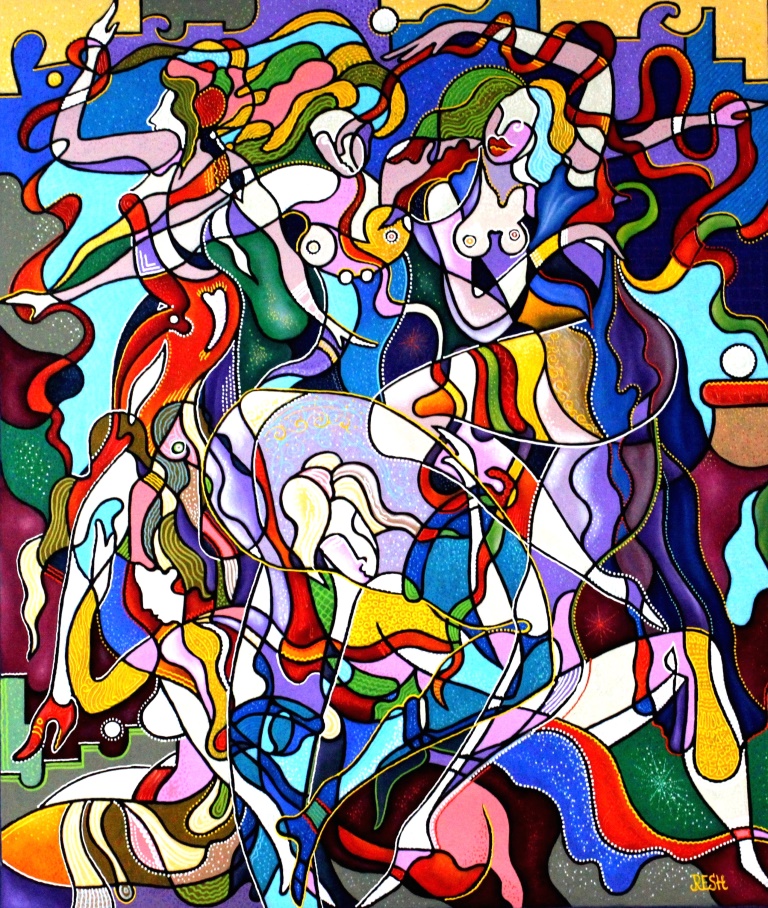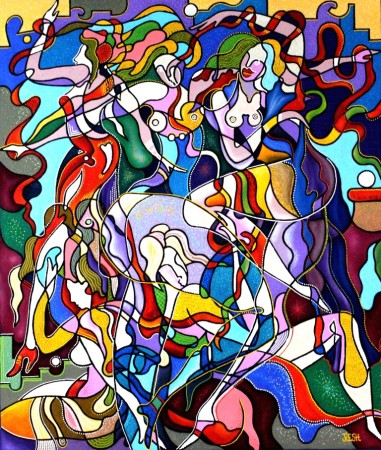ABSTRACT ART — history of development. Part 2.
Part 2.
In postwar America gained momentum, “New York School”, whose members were founders of abstract expressionism D. Pollack, Rothko, Newman B., A. Gottlieb.
The abstractionism are two clear trends: geometric abstraction based mainly on well-defined configurations (Malevich, Mondrian), and the lyrical abstraction, in which the composition is organized from the free-flowing form (Kandinsky). Also abstractionism there are several large independent currents. We call some of them: Cubism, Rayonizm (Rayonism) Neoplastitsizm, Orphism, Suprematism, tashizma, Abstract Expressionism. Each of these areas is different and has their creators. And of course, their fans. But this is another very big topic.
Cubism – an avant-garde trend in art, which originated at the beginning of the XX century and is characterized by the use of conventional forms emphasized geometric forms, the desire to “crush” the real objects on the stereometric primitives.
Rayonizm (Beams) – direction of abstract art in the 1910s, GG, based on the amount of displacement of the light spectrum and light transmission. Characterized by the idea of the emergence of forms of “intersection of the reflected rays of various objects”, as the person actually perceived not the object itself, and “the amount of rays from the light source reflected from the object.”
Neoplastitsizm – Designation of the direction of abstract art, which existed in 1917-1928 gg. in the Netherlands and brings together artists, grouped around the magazine «De Stijl» («Style”). Characterized by clear rectangular shapes in architecture and painting in an abstract arrangement of large rectangular planes, painted in the primary colors of the spectrum.
Orphism – trend in French painting of the 1910s. Artists orfisty sought to express the dynamics of movement and musical rhythms through “laws” the interpenetration of the primary colors of the spectrum and interconnectivity curved surfaces.
Suprematism – the direction in avant-garde art, founded in the 1910s. Malevich. Expressed in combinations of colored planes simple geometric shapes. The combination of multi-colored geometric shapes forms imbued with internal movement balanced asymmetrical Suprematist compositions.
Tashizma – for West European abstractionism in 1950-60s, the most widely used in the United States. It is a painting spots that do not evoke images of reality and express the unconscious activity of the artist. Smears, lines and spots in tashizma applied to the canvas with fast hand movements without a premeditated plan.
Abstract expressionism – the movement of artists, depicting quickly and on large canvases, using non-geometric strokes, large brushes, sometimes dripping

